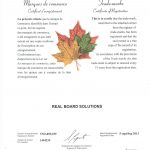Committee Reports Can Waste Valuable Time However…
Committee reports can use up valuable time at board meetings. Directors sit through a litany of reports and updates and her is one that we hear far too often “Our committee didn’t really meet but I can give you an update on how we’re doing…” (There goes on and on for another 15-20 minutes!)
Listening to reports and not having read them is advance is not good governance. Below we have described three ways to effectively manage committee reports at board meetings.
Three Strong Solutions:
There are several approaches to respecting the reports without losing valuable director time.
Consent Agenda — Using a consent agenda is an efficient meeting practice that groups the routine reports into a single agenda item. The reports are distributed and expected to be read in advance of the board meeting.
Since most reports are for informational purposes and do not request action, the bundle can be accepted by a single motion, “to accept as distributed.” This leaves time for more substantive discussions, often saving hours.
Establish a policy for directors to ask questions or request discussion about something in a report. e.g., 36 hours prior to the meeting Committee items that require action or approval can be voted on separately.
Firm Approach — The chief elected officer establishes non-negotiable content and deadline expectations for reports and updates and remains firm about them. Require that committee chairs submit reports by a pre-established date and that they include only the information that you define. Ask directors to read reports before the meeting. If highlights of the reports need to be heard at the meeting, require chairs to get prior approval and then set time limits, such as two minutes per report. Watch out for the report that begins with, “I just want to say…” or, “I don’t know if this is for the whole board, but…”
Reporting Framework — Reports, whether oral or written, can be unnecessarily lengthy. Provide a framework for committee reports, keeping in mind the adage that brief is better. Emphasize the importance of reporting only need-to-know details and those required by the association bylaws or procedures.
Included is a sample template that details the basic reporting info, plus a reporting table combining the agenda, performance measures, and status. Similar to a project management report, this allows issues and tasks to be easily reported and tracked over time.
We all know that Committees, and your committee structure, can be an asset or a detriment.
Committees are intended to support and supplement the efforts of the board and staff. They may be identified as standing committees (per the bylaws) or task forces (short-term assignments). They should produce results that advance the association’s or other not-for-profit’s mission and strategic plan.
A productive committee will be key to moving the association forward by producing beneficial results. A rogue committee can get an organization in hot water for what they say or do.
A strong committee structure will engage members and prepare leaders. A weak committee structure can disengage and discourage volunteers, especially if meetings are poorly planned and executed or, worse…



